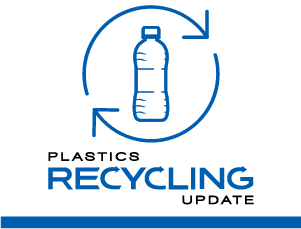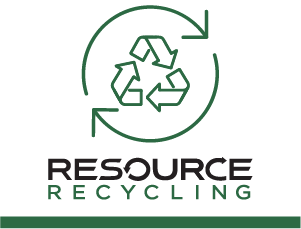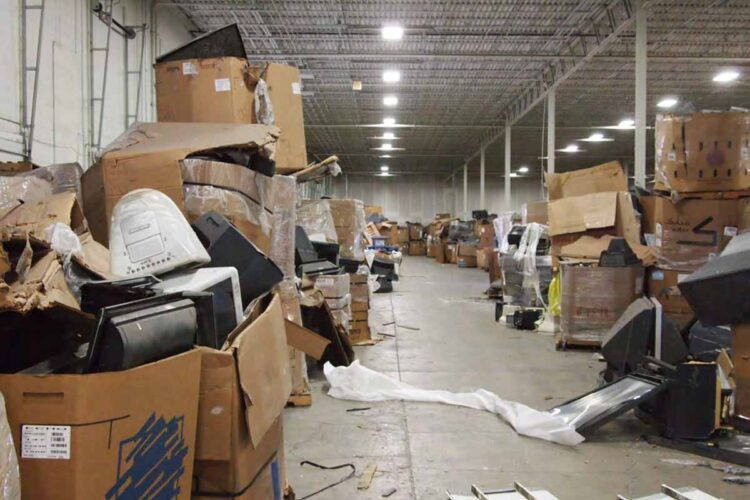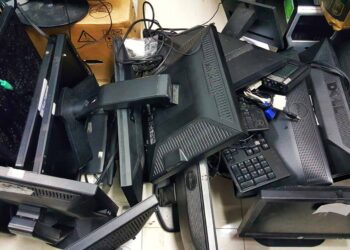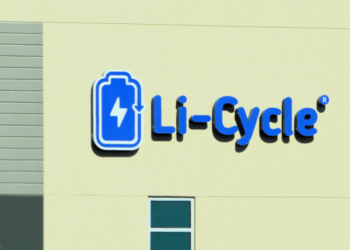An Ohio county judge has ordered Closed Loop Refining & Recovery and Closed Loop Glass to pay civil penalties to the state in what Ohio’s attorney general called the “final chapter” in the massive CRT stockpile cleanup case in that state.
Judge Andria Noble of the Franklin County Court of Common Pleas on July 28 ordered the two defunct companies to pay $3 million to the state treasurer within 30 days, bringing to a close a multi-year legal action.
“These companies dumped a toxic mountain of waste and vanished, but the consequences caught up with them,” Ohio Attorney General Dave Yost said in a statement. “This is the final chapter in one of the largest hazardous waste cases our office has ever taken on.”
The Closed Loop companies formed in 2010 and positioned themselves as a massive domestic downstream outlet for CRT glass from electronics recycling companies. Led by company CEO Brent Benham, Closed Loop had plans to build a furnace that could process 72 million pounds of CRT glass per year, E-Scrap News previously reported.
Instead, after amassing hundreds of millions of pounds of CRT glass and growing regulatory pressure, the company collapsed in 2016, triggering an unprecedented CRT abandonment case spanning multiple properties in Ohio and Arizona, and creating years of legal battles between landlords and companies that supplied glass to Closed Loop.
The Franklin County legal action launched in October 2023, when the state attorney general’s office sought injunctive relief and civil penalties for Closed Loop’s illegal storage and transportation of hazardous waste, operation of a hazardous waste facility without a permit, failure to maintain required facility closure preparations, and more. That action also sought civil penalties against the landlords of Closed Loop’s Ohio warehouses, Garrison Southfield Park and Olymbec USA, who later settled with the state for $250,000 in penalties.
Prosecutors made their case during a September 2024 hearing, which was not attended by any representatives of the Closed Loop companies. In January 2025, the court magistrate issued an opinion recommending the court approve the state’s request for a $3 million penalty against Closed Loop. Last week’s ruling makes that order official.
Prosecutors initially sought a penalty of $10,000 per day for each day of the violation, including after the legal action was launched. Considering only the period from April 2016 – when the Ohio EPA initially informed Closed Loop of its hazardous waste violations – until November 2022 – when a final clean-up report was issued for one of the Ohio warehouses, the court magistrate calculated the penalty would total $23,980,000. Final clean-up approval for both sites was issued sometime in 2023, records indicate, so the penalty could have gone even higher.
By contrast, the $3 million sought by prosecutors was “quite reasonable and, under the circumstances, most definitely warranted,” the magistrate found.
Meanwhile, cleanup efforts are wrapping up at the final Arizona location where Closed Loop abandoned CRT glass. Stockpiles on two properties were previously cleaned up in 2021, and the outdoor stockpile at a third property was being cleaned up at that time.
A recent update from the Arizona Department of Environmental Quality shows the final portion, removal of CRT glass stockpiled inside a warehouse on that third property, is now underway. A work plan approved in October 2023 called for crews to “remove CRT material from inside the building and transport as Resource Conservation and Recovery Act (RCRA) hazardous waste to U.S. Ecology Nevada Landfill,” and to “decontaminate the building and conduct confirmation wipe sampling.”
The interior work began in November 2023 and will continue through this summer, according to the AZDEQ file.


